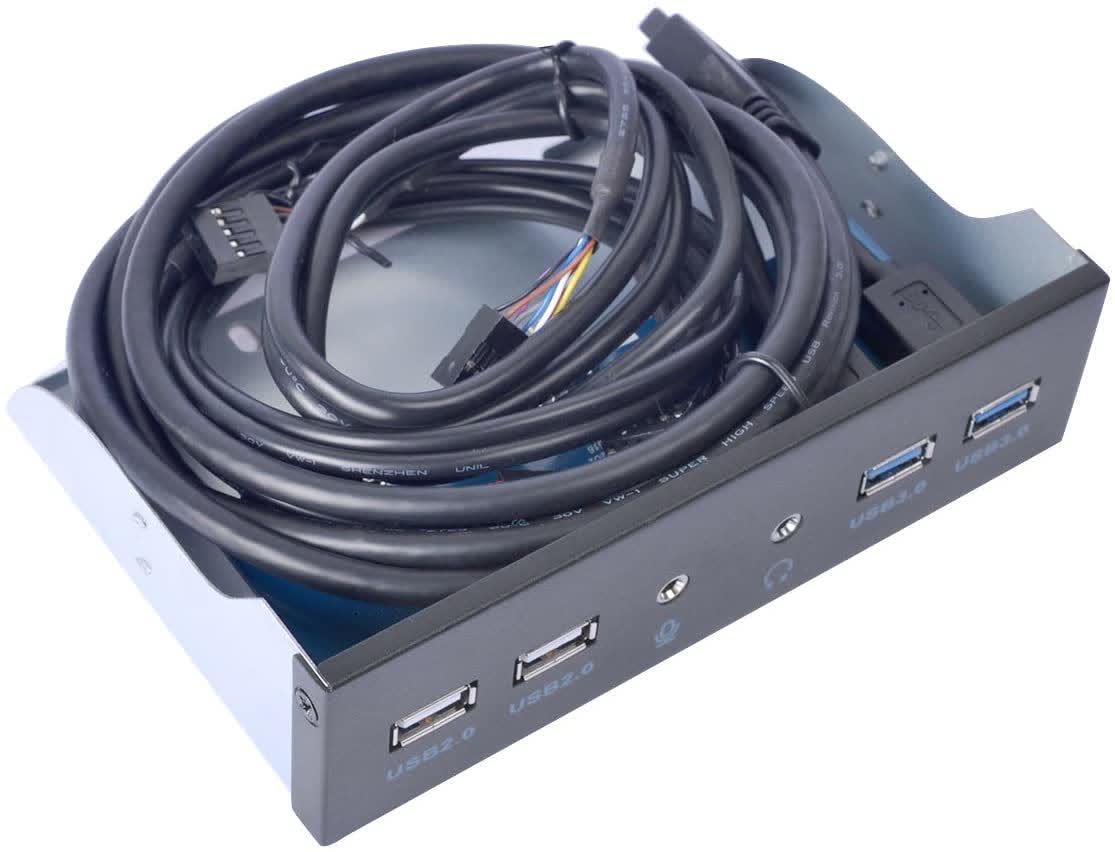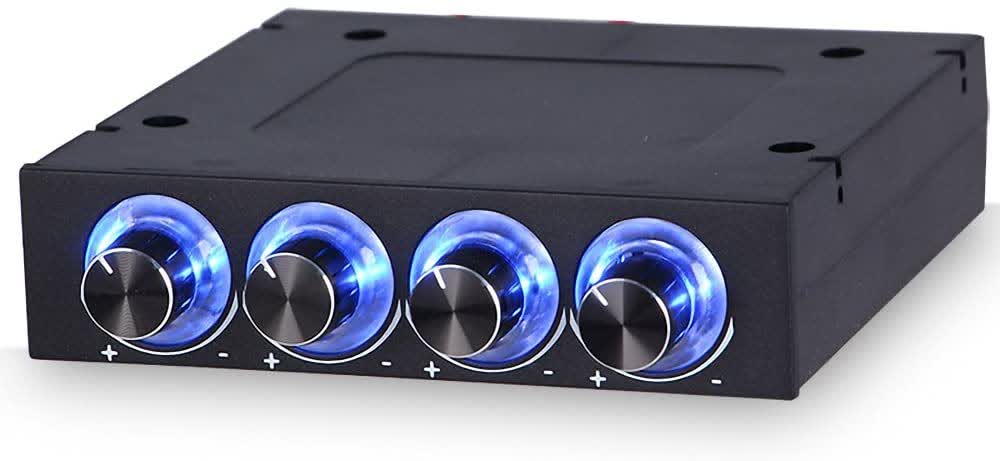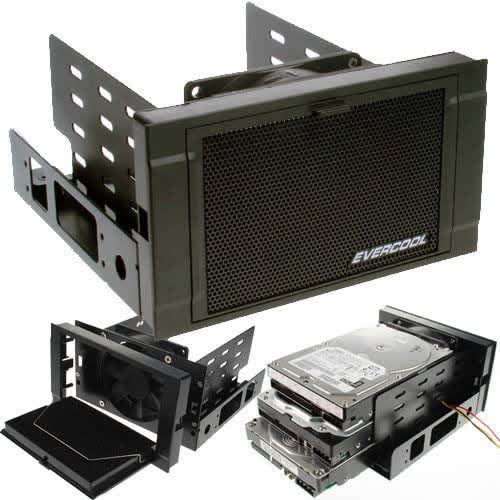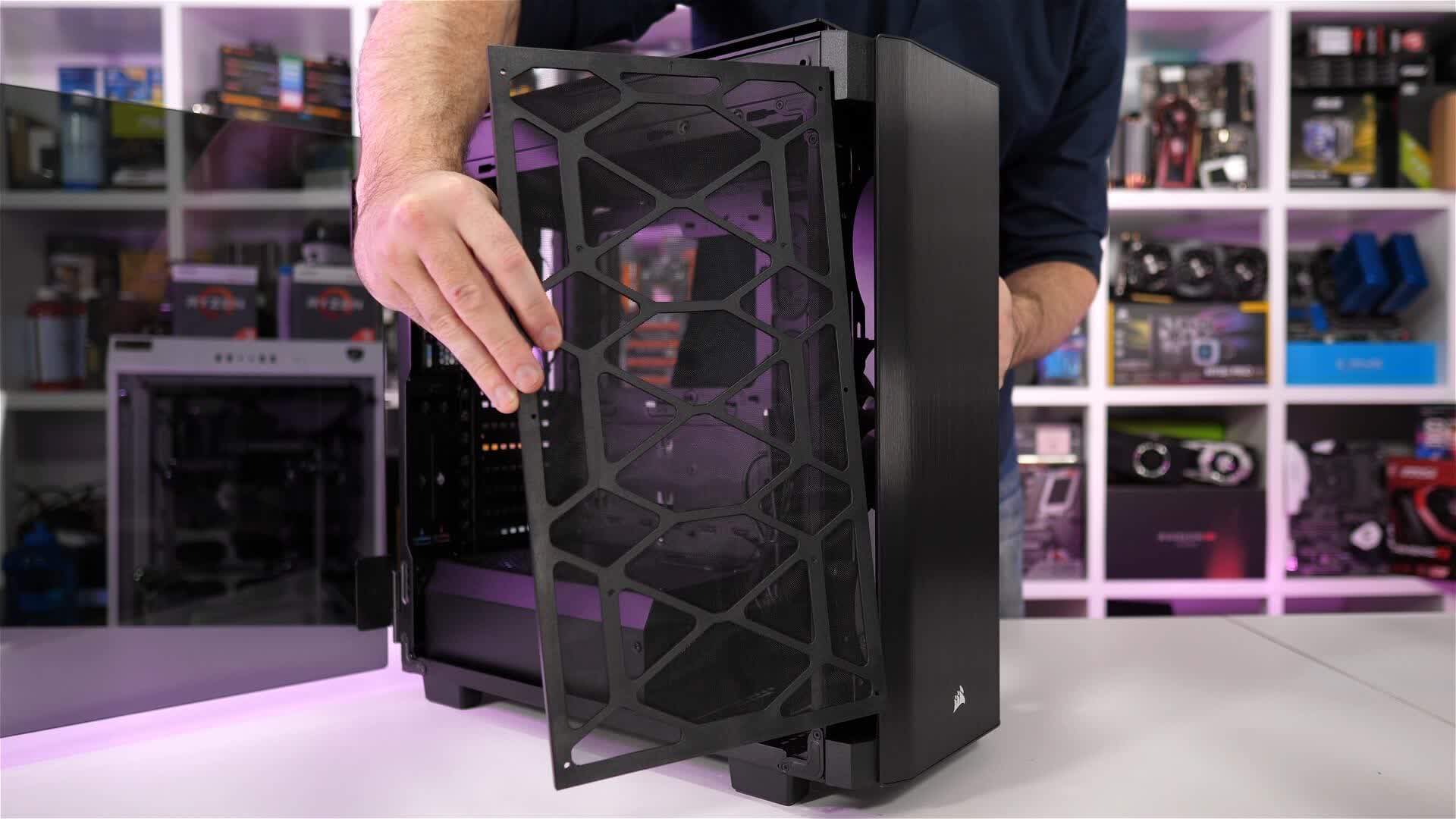If your PC case is several years old, you may feel that it no longer cuts it. It may not have USB-C, or even USB 3.0. It may not offer enough airflow for your current hardware, or enough space for all of your internal drives. Some of its front connectors may not even work anymore. But when you look at today's most popular cases, you realize that none of them is right for you, or simply they're not worth the expense. Perhaps, you still love your old case but feel like you could use a new feature or two you currently don't have.
For many years now, a side panel of tempered glass has been a standard feature in most cases. That marked the end of side vents, just when M.2 drives that could benefit from them started becoming popular. That's also limited the number of external drives (usually to zero) and internal 3.5" drives, both for aesthetic reasons and because filling the front of the case with drives when it has no side vents would destroy its thermal capability.
Maybe you don't want a tempered glass panel because you often carry your PC around. Maybe you still use CDs and don't want to clutter your desk with an external drive. Maybe you need several hard drives for an affordable RAID setup. Also, replacing a case is about the same amount of work as building a new PC from scratch. You may not have the time or confidence to replace it yourself. If any of the above is true for you, upgrading your current case in ways that can't be done with most new cases may be just what you need. So, where do you start?
New front connectors
The lack of modern and functional front connectors on a case is certainly not a reason to replace it. For just $19, you can get a 5.25" bay with two USB 3.0 connectors, two USB 2.0 connectors, and headphone & mic jacks. The best part is, the USB 3.0 connectors connect directly to your motherboard, with no intermediate point of failure. The USB 2.0 and audio ports do use a circuit board, just like the one built into your case.

You may also see the need for a connectivity hub for a different reason: if your case has them around the middle or near the bottom, possibly because you thought your tower case would rest on top of your desk, but now it's on the floor.
If you have an external 3.5" bay and actually want USB 3.0 in the middle of the case's front panel, where those bays typically are, Tek Republic's two-USB 3.0 connector is just $12, and Excelity's is $1 more. C-Zone has a similar product with audio connectors for $16.
If your motherboard has an internal USB-C connector, Hima has a very similar product to USEC's with an additional USB-C connector for $29. Once again, the USB-C connector connects directly to the motherboard.
Moving the fans around
If you are considering replacing your case for its thermal performance, you may want to check other options first. For example, Corsair's Carbide 200R was among the most popular cases in the first half of the last decade. It was praised for its tool-less design, but criticized for its thermals, at least when it came to graphics cards and storage drives.
As long as you have the non-windowed version, though, the problem is not with the case itself but with the default fan configuration. The 200R's front panel greatly restricts airflow, and with vents all over the place, most of the air goes into and out of the case without ever reaching the graphics card.

In that case, the solution may be simpler than you think: move the front fan to the bottom side vent, just in front of the graphics card. If you are afraid that connecting the case's left panel to the motherboard will make it harder for you to open the case, you can buy a 12" 4-pin extension cable for less than $5, or a 5-pack for $7.
You may also want to add a filter for the side intake. Amazon has many options, with prices reflecting quality, size, shape and whether the frame is magnetic and/or painted. Just make sure that the filter is made of an actual net and not just a pierced piece of metal that blocks air as much as it blocks dust. With most of the air entering the case through a filtered intake, very little air will be able to get into the case through non-filtered vents and holes.
Since 2017, AMD has made top-down CPU coolers popular again with its mostly decent Wraith series. If you have a top-down cooler, you may want to move the case's rear fan to the side as well. You can buy an extension cable for that fan, but a more elegant solution would be using a 4-pin splitter ($6 for a 2-pack).
With the switch toward M.2 storage drives, typically placed near the graphics card, the non-windowed 200R may actually be a better case than it was in 2012.
A drawer for your USB devices
Another reason not to replace your old case is the ability to use one of its 5.25" bays for a drawer. After all, what's a better place to keep your USB devices than right near your computer's USB ports?
The cheapest item of that kind is currently Cosmos', priced at $9. It may be just a small plastic device, but it's cheaper than "essential" RGB strips. If you want a higher-quality product, with a metal enclosure, Enlabs has one for $20.

A physical fan controller
If your fans are connected to your motherboard with 4-pin connectors, you can control spinning speed via software. The problem is, it's usually during gaming that you realize that your PC is uncomfortably loud due to the graphics card's fans spinning at near full throttle. Your PC will be quieter with larger case fans spinning slightly faster to provide the graphics card with cooler air.

If you have an external 3.5" bay to spare, KKmoon's 4-channel controller with physical buttons is a good option at $15, and Kingwin sells a possibly identical product for $1 more. If you only have 5.25" external bays, Vantec's adapter is $7. If you prefer a touchscreen, Kingwin has a relevant 5-channel model for $32.

Well-ventilated drive bays
If you need more 3.5" storage drives than your case supports, you can turn any 5.25" bay into a 3.5" for $5. As long as your case's 5.25" bay covers are vented it's great, but if they aren't, you may not want to squeeze several hard drives into a potential hot spot.
If you want to add several hard disks, or just want the ones you have to get more air, then Evercool has the solution for you. The Armor cage turns two 5.25" bays into three 3.5" bays with their own 80mm fan and filter for $25.

If you have 3 available 5.25" bays and want to max out on your space, Icydock's Black Vortex supports 4 drives and comes with a 120mm fan. Because of the placement of 5.25" bays, that fan can also help CPU cooling, especially if you have a tower cooler. At $60, it costs about as much as a decent case, but it's not meant to be bought alongside a new case. Rather, it's meant to save you the need to switch to a different case, or buy a NAS.
Bonus
- If your job involves recovering data from SATA drives, Kingwin's $18 bracket can turn a 5.25" bay into a hot-swap bay for 3.5" and 2.5" drives.
- If you need to copy data between 2.5" drives, IcyDock has some interesting options: for less than $35 you can get a hot-swap bay for two 2.5" devices and a 3.5" bracket, where you can actually add the 3.5" version of the device ($24).
- For $60, you can buy a four-2.5" drive bay with its own tiny fan. A six-2.5" drive bay with two fans is $71.

